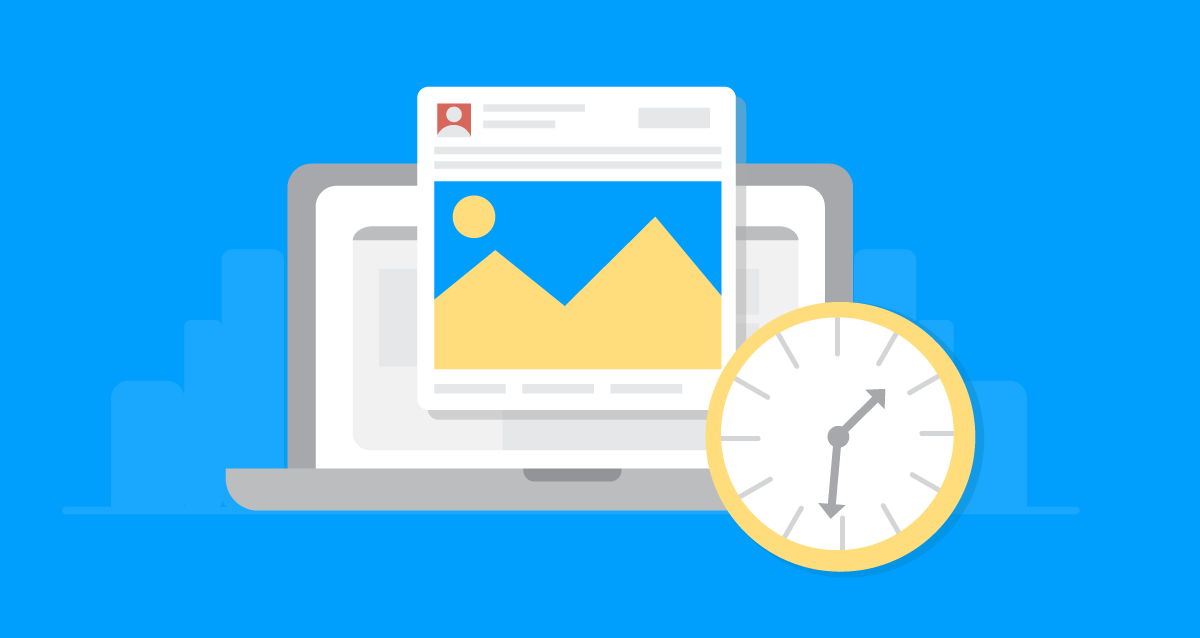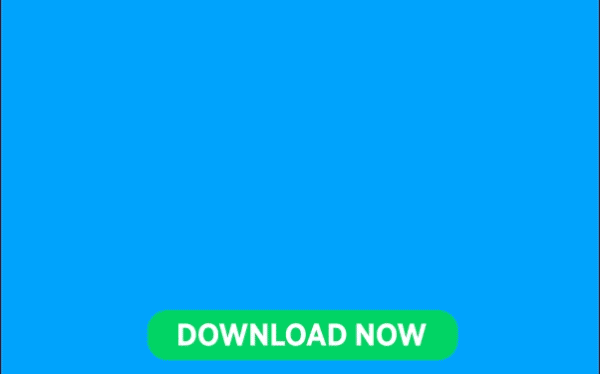Do you already have a couple Facebook ad campaigns running?
Would you be interested in a tip that will help maximize your results?
(And not just on Facebook, but with any traffic network?)
Then you’re in luck.
Because in this post you’re going to learn a simple Facebook ad trick that will free the untapped profits that are hiding in your ad campaigns. It’s easy to do, but don’t let that fool you—it’s a powerful tip to help convert more of those near-sales into new sales.
How It Works
Before we dive into the specifics, let me use a simple metaphor to help you understand how this tip works.
Think of your sales funnel as a series of steps. Together, they make a staircase.
In order to reach the top of the stairs (aka make a purchase), your customers have to take each step, one at a time, in the correct order.
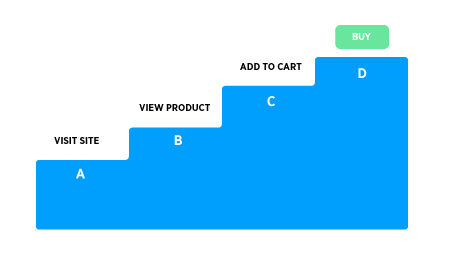
At each step in this process, you’re bound to lose people. Perhaps only 40% of the people who reach step A make it to step B. Maybe 60% of those people reach step C. And only 10% of those people reach step D. And so on.
If you’re a regular DigitalMarketer reader, you already know the way to squeeze more profit from this funnel (and get more leads, customers, and sales). You just need to find the steps where the most people are getting stuck and come up with solutions to help them get unstuck.
But that begs the question:
How do you do that? How do you get back in front of those “stuck” people and get them moving through your sales funnel once again?
The answer, in a nutshell, is remarketing.
What Is Remarketing?
Just because someone didn’t take the next step in your sales funnel doesn’t mean they don’t WANT to.
If you’ve been following us long here on DigitalMarketer, you’ve probably heard quite a bit about remarketing. But you may still have a few questions about how it works.
Basically, remarketing allows you to keep track of the people who visit your website. Then it gives you the power to follow them around on the web and show them relevant ads and offers that have to do with what they viewed on your site.
Here’s an example of remarketing at work:
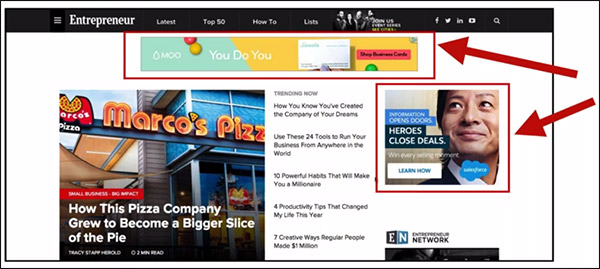
See those 2 ads highlighted in red?
The reason I’m seeing these 2 ads on Entrepreneur’s website is because I recently visited both of these websites. As a result, they know there’s a good chance that I’m interested in their service and so they’re willing to pay to show these ads to me.
Now those ads are being shown on a 3rd-party website through an ad platform such as Google Adwords. But you can also do remarketing on Facebook, Instagram—just about any traffic network out there.
Here’s an example of one of DigitalMarketer’s remarketing ads on Facebook:
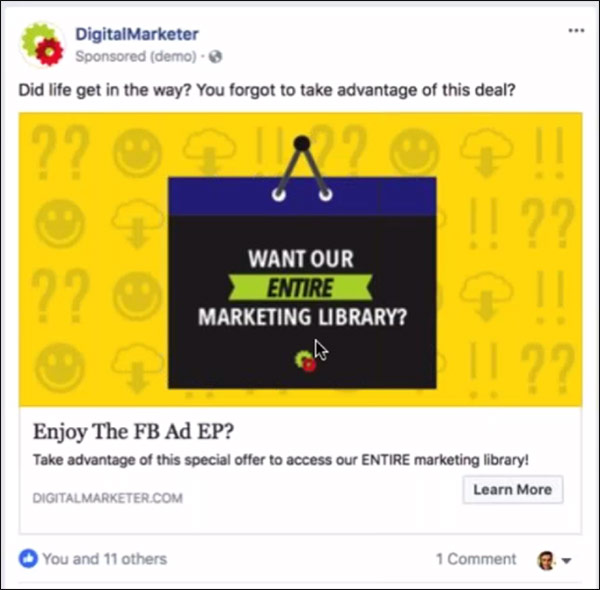
The awesome thing about using Facebook for your remarketing is that it’s relatively simple to set up. There’s no extra software to install or learn. If you have the Facebook pixel installed, then you already have everything you need to keep track of what people do on your website.
And once you know what people have done on your website, it’s not that hard to figure out what kind of relevant offer makes the most sense to promote to them.
Keep this in mind:
Just because someone didn’t take the next step in your sales funnel doesn’t mean they don’t WANT to. Or that they wouldn’t take the next step if they had another opportunity.
There’s a good chance that life simply got in the way: they got busy, their phone ran out of battery, something distracted them.
And when that kind of thing happens, the best thing you can do to help move people along through your sales funnel is to give them a gentle reminder.
That’s exactly what remarketing does, and that’s why it’s such a powerful way to improve your advertising.
In fact, let’s talk about that for a second.
Just how important is remarketing, anyway?
Why Remarketing is More Important Than Ever
In the early days of digital marketing, there was no such thing as remarketing. But today it’s a vital part of any successful ad campaign.
And it’s only becoming more and more important over time.
Why? Because traffic campaigns are getting crowded. And all that competition is leading to increased prices.
Over the past 2 years, the average cost per customer rose by roughly 40% at DigitalMarketer. All as a result of increased traffic costs (primarily on Facebook).
Yes, you read that right—40%. That’s a big increase. A 40% increase in the cost of customer acquisition could mean the difference between a company that’s profitable and one that’s not.
Fortunately, there are ways to offset these rising costs. And remarketing is one of those ways.
Through the strategic use of remarketing, we’ve been able to increase our conversion rates by 2-4% overall on any given page. So a page that converts at 8% without remarketing can convert at 10-12% with it.
That’s huge!
And remarketing is especially powerful on Facebook. Historically, the cost for remarketing ads on FB is way cheaper than the cost for clicks to cold traffic. Cheaper clicks + warm traffic = high ROI campaigns and more customers flowing into your business.
I would go so far as to say that remarketing is the best way to quickly get a measurable improvement on your conversion rates and your overall advertising performance.
But…
(And that’s a big… well… let’s just say Sir Mix-a-Lot would like that “but.”)
Remarketing is like a can of worms.
Once you open it up, you realize that you can use remarketing just about anywhere!
And in order to enjoy the benefits of remarketing, you have to be able to figure out WHERE to remarket for the best results.
So how do you do that? How can you figure out—quickly, simply, and easily—where to focus your remarketing efforts?
That’s what you’re about to learn in the rest of this post.
How to Find The Best Place To Do Remarketing
When deciding where to do remarketing, it all comes down to one thing:
Opportunity.
When deciding where to do remarketing, it all comes down to one thing: Opportunity.
You want to focus your remarketing on the steps in your sales funnel with the most opportunity. If 300 people are stuck on step C in your funnel, and 2,000 are stuck on step D, doesn’t it stand to reason that step D has more potential than step C?
Because more opportunity = more leads, sales, and revenue.
And when it comes to measuring this opportunity, there are 2 ways you can do it:
1. Measuring Opportunity with Google Analytics
One way to measure potential is by using Google Analytics (GA). Google Analytics is really powerful. You can use it to do super deep-dives and get really detailed in your analysis.
But the downside to GA is that it’s slower, manual, and requires more math. It also requires quite a bit of learning if you’re not already an advanced user.
So yes, GA is a great tool. But for most people reading this, it’s probably not the best way to get started. Instead, I recommend…
2. Measuring Opportunity with Traffic Platforms
What you can do instead is measure opportunity using the remarketing lists that are already built into your favorite traffic platforms. That’s what I’m going to show you how to do in this blog post.
Your traffic platform’s remarketing lists are flexible and auto-updating. They’re a great way to get quick insights to help you make smart marketing decisions.
I’m going to show you how to do this using Facebook remarketing audiences, but don’t think you have to use Facebook for this. You can take the same principles you’re about to learn and apply them to Adwords or any other traffic platform you want.
(NOTE: Want to make creating Facebook ads way easier? Download the FREE Ultimate Facebook Ad Template Library so you can just copy and paste these 7 proven Facebook ad campaigns to create low-cost, high-converting ads on demand. Learn more here!)
The “Secret Sauce” to This Method
OK, if you’ve been following along then you know that you’re about to learn how to find the best place in your sales funnel to do remarketing.
And you’re going to learn how to do it quickly and easily using your ad network’s built-in remarketing lists.
But in order to make this method work, there are 2 things you’re going to want to do. These 2 things are the secret sauces that make this method really work.
Exclusion Model
In order for these remarketing lists to work, you need 2 pieces of information for each step of the funnel:
The URL of the last page in your funnel that the person reached
The URL of the next page in the funnel (the page they didn’t reach)
For example, say you’re creating a list of people who reached your order form but didn’t complete their purchase.
In that case, you know that they reached the page yourwebsite.com/order-form. You also know that they did NOT reach the page yourwebsite.com/order-confirmation.
So in the language of your ad network, you want to INCLUDE people who reached yourwebsite.com/order-form. And you want to EXCLUDE people who reached yourwebsite.com/order-confirmation.
This way you’ll be targeting everyone who reached the order form but failed to complete their order.
Make sense?
Here’s an example of what this looks like in Facebook:
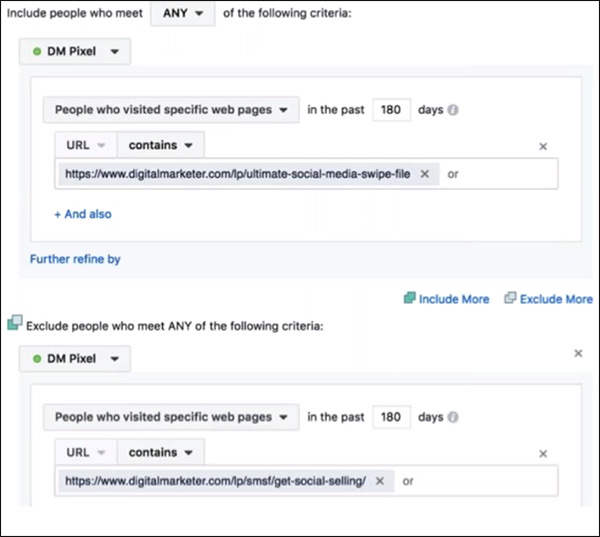
Pretty much everybody understands the “Include” half of this equation. But it’s a common mistake for people for forget the “Exclude” part of it. Remember that you need both parts if you want to narrow down your funnel opportunity on a step-by-step basis.
Naming Conventions
When creating these audiences, you’ll have an easier time if you use a consistent naming convention. The naming system I like to use is:
Media – [Funnel Name] – [Stage Letter] – [Stage Description]
When you follow a consistent naming convention like this, it becomes super easy to sort and filter. That way, you can quickly see all the funnels steps you want at a glance.
For example, here are all the stages for our “FB Ad Templates” funnel:
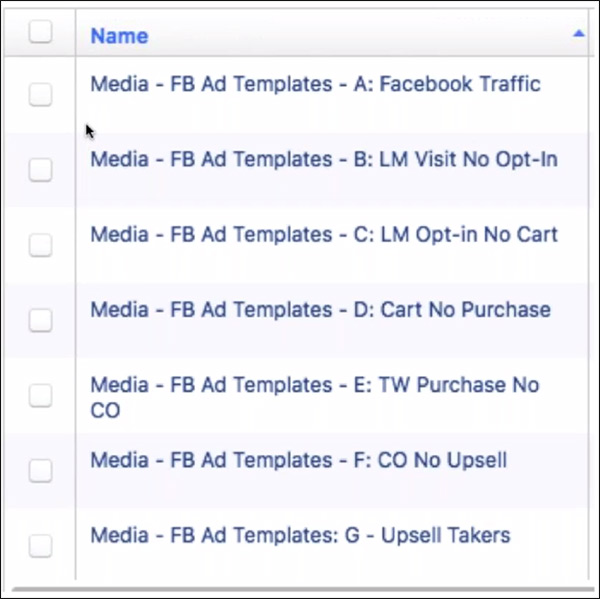
Having all this information right there in the name of the audience also makes it easy to filter them so I see only the audiences I want. For example, if I want to compare all of our paid traffic campaigns, I just filter for the word “Media.” If I want to look at one specific funnel, I filter for the name of the funnel (like “FB Ad Templates”).
I can also compare similar stages across funnels. For example, if I want to compare all of our audiences of people who reached the shopping cart but didn’t make a purchase, I filter for “Cart No Purchase.”
So when you put this all together, you get a screen that looks like this:
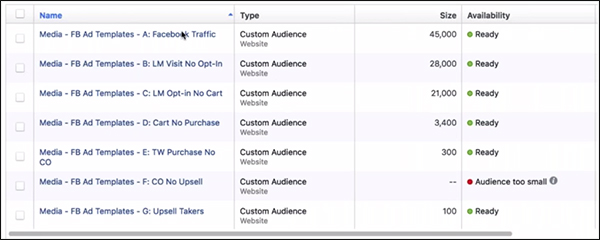
Take a look at that for a moment and just think how useful it is. You can see at a glance how many people are stuck at each stage in the funnel.
Want some immediate revenue? Well, there are 3,400 people who abandoned their shopping cart. Remarketing to those people is going to generate some instant sales.
Or maybe you need more leads? You can see right away that 28,000 people reached the Lead Magnet page but didn’t opt-in Remarketing to those people will give us an influx of new leads.
And because I use the same naming convention for all of our funnels, I can do something like this:

Here you see all the people who are stuck at step B in one of our funnels. This view makes it really easy to compare the traffic potential in each of our funnels side-by-side.
Step-by-Step Example
Let me walk you through a quick step-by-step example from one of our funnels at DigitalMarketer. This might be a good time to follow along with one of your own funnels.
First, write down all the URLs of each page in the funnel:
Opt-In Page: https://digitalmarketer.com/lp/ultimate-social-media-swipe-file/
Sales Page: https://digitalmarketer.com/lp/smsf/get-social-selling/
Shopping Cart: https://digitalmarketer.com/secure/ssep/social-selling-special/
Upsell 1: https://digitalmarketer.com/secure/ssep/social-selling-special/oto1
Upsell 2: https://digitalmarketer.com/secure/ssep/social-selling-special/oto2
Order Confirmation Page: https://digitalmarketer.com/secure/ssep/social-selling-special/thank-you
Next, you want to create a Facebook audience for the people who got stuck at each step of the funnel. To do that, the audience should include everyone who reached a certain URL:
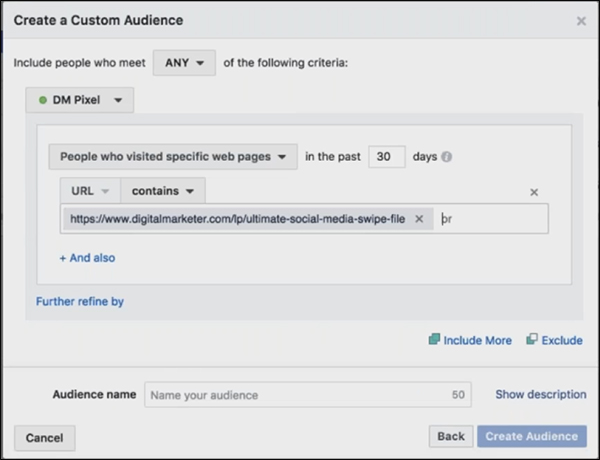
Then, exclude everyone who reached the URL of the next stage of the funnel:
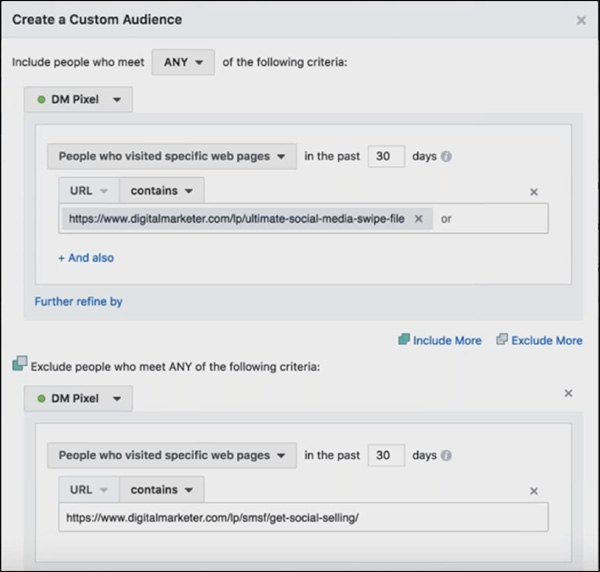
Make sense? If we target everyone who reached the opt-in page, but who didn’t reach the sales page, then we’ll see how many people got “stuck” on that step of the funnel.
Next, I prefer to set the date ranges for 180 days, so we have more data to work with:
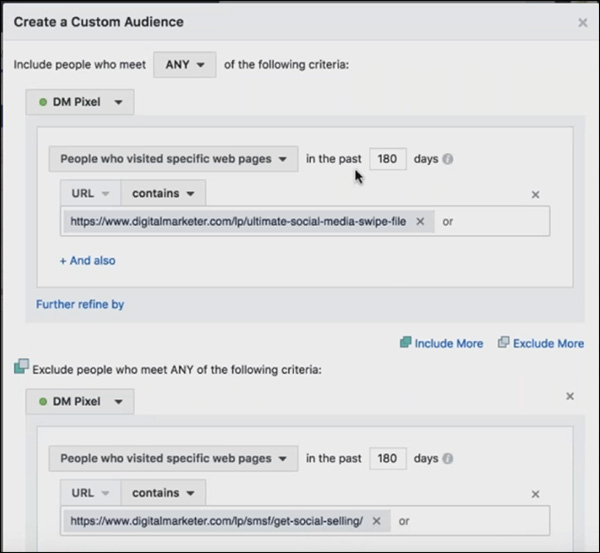
And finally, use the naming convention you learned (or come up with your own) to make it easy to compare different funnel steps:

When you complete the process, you’ll end up with something like this. It’s a list of funnel steps that show exactly how many people got stuck at each step in your funnel:
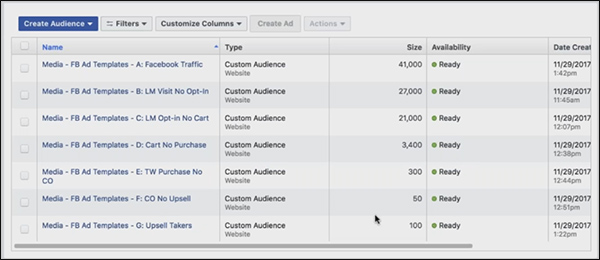
The awesome thing about this view is that all you need to interpret it is a little common sense. You don’t need any sort of special tool or calculator to understand what’s going on here.
Another useful trick is to put this data in a spreadsheet, so you can compare the performance of several different funnels at once.
Here I’ve added the data for 3 of our funnels, so you can see exactly how many people made it to each step in each of them side-by-side:

What sort of actionable information can you take away from this quick and easy chart?
First of all, take a look at the “Perfect Blog Post Templates” funnel. In row 3 (step B) you see that only 4,300 people saw the opt-in page and didn’t opt in. But in the next step, we had 21,000 people who opted in but then didn’t add the product to their cart.
So the Lead Magnet section of this funnel is working great. But the sales page might need a little work.
And if we were going to run a remarketing campaign for this funnel, we wouldn’t run it to opt-in page visitors. Instead, we’d run it for people who viewed the sales page.
OK, now I want you to give it a try. Take a look at the spreadsheet above and answer this question:
If we wanted more immediate sales, where should we run a remarketing campaign? Which funnel, and which step in that funnel?
(I’ll give you a minute to think.)
(Hey, no peeking!)
OK, hopefully, you took a minute to think about that.
If we wanted more immediate sales, the best place to retarget is shopping cart abandoners (step D). So scanning that row, you can quickly see that the Facebook Ad Templates funnel has twice as many cart abandoners as the other funnels. So that’s where I would start with a shopping cart remarketing campaign.
(NOTE: Want to make creating Facebook ads way easier? Download the FREE Ultimate Facebook Ad Template Library so you can just copy and paste these 7 proven Facebook ad campaigns to create low-cost, high-converting ads on demand. Learn more here!)
4 Advanced Tips + A Disclaimer
You now have a simple process you can use to analyze traffic volume and potential in your sales funnels using Facebook remarketing lists.
But we’re not done yet.
Because with this strategy in place, there are some even more advanced things you can do to help really skyrocket your paid traffic results.
First, however, there’s 1 disclaimer I should make.
Disclaimer: Only Use This for Funnels You Trust
I want to mention a caveat to keep in mind.
You should only use this process on funnels you trust. Funnels that work. That convert well.
You should only use this process on funnels you trust. Funnels that work. That convert well. That you’re comfortable sending paid traffic to.
Think about it for a second. Let’s say you run traffic to a funnel that is losing you money. Maybe the opt-in page and sales page convert really poorly.
If you send a lot of traffic through this funnel, it might show up as a high-opportunity place to do some remarketing. But there’s nothing to be gained from sending traffic to a funnel that doesn’t convert. That’s just throwing good money after bad.
So keep that in mind when going through this process. If your funnel isn’t converting well enough to turn a profit, spend more time optimizing it before you start remarketing heavily.
Facebook Ad Advanced Tip 1: Choosing New Primary Traffic Campaigns
So far, you’ve learned how to use this process to improve the performance of your existing traffic campaigns. But you can also use it to help discover new traffic campaigns that you should be running.
It works along the same lines—by finding content on your website with high opportunity.
Here’s how it works.
First, come up with a list of keywords that come up a lot in your content.
For example, some of our frequent keywords at DigitalMarketer include “Facebook,” “social,” “Adwords,” etc.
Then create a Facebook audience for each of those keywords. And make sure to exclude anybody who has already opted in for any Lead Magnets relevant to those keywords.
For example, at DigitalMarketer we have a Lead Magnet called “The Customer Avatar Worksheet.” It’s a downloadable worksheet that you can use to help define your customer avatar and fine-tune your advertising for the right kinds of people.
But how well are we doing with this Lead Magnet? Are we doing a good job of getting people who are interested in this topic to opt-in for the worksheet? Or do we need to create a new ad campaign targeting these people?
To find out, we would create a custom audience like this:
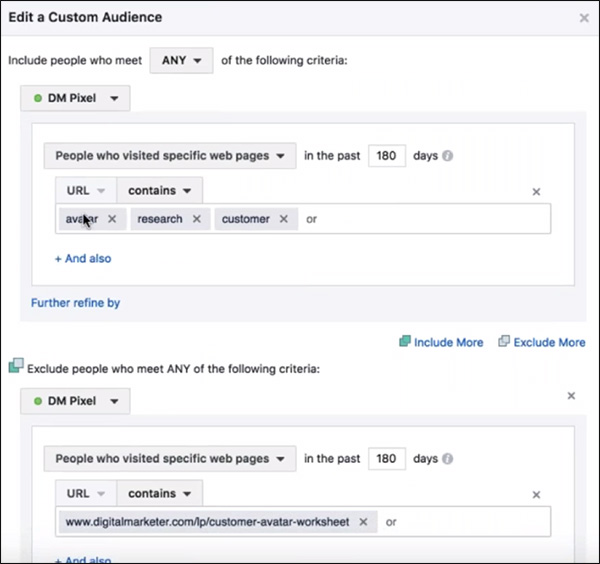
This creates a list of everyone who has read a blog post with the words avatar, research, or customer, but did not sign up for the Customer Avatar Worksheet.
And we can use the size of that audience to judge how much opportunity there is around this topic. If the audience is really small, then we know it’s not worth going after these people right now. But if it’s a big audience, then maybe it’s time to start targeting it with a new traffic campaign.
Facebook Ad Advanced Tip 2: Tracking the Health of Your Offers/Web Pages
So far, I have been using the longest possible date range (180 days). This is helpful because it gives you the biggest possible audience size. Generally speaking, larger audiences will help make trends more visible.
But if you shrink down the date range to something much more recent, say the past 10 days, you can use it as a sort of health check. Those recent audiences will let you know anytime something breaks.

For instance, let’s say you notice that nobody has made it past your opt-in page over the past week. That’s probably a good indication that something is broken on your site.
This can help you stay on top of technical problems, so you don’t lose business to 404 pages and other website errors.
Facebook Ad Advanced Tip 3: Finding New Hooks for Lead Magnets
You can also use this process to keep your finger on the pulse of what your website visitors are interested in. And by doing that, you can measure when it’s time to create a new Lead Magnet to bring more leads & prospects into your sales funnels.
For example, at this writing, we do not yet have a Lead Magnet that’s geared toward helping people to create a Facebook Messenger chatbot. However, we know that this is a topic that’s growing in popularity. So sooner or later we may want to create one.
One way we can keep our finger on that pulse and measure the popularity of chatbots is by creating a Facebook list of anyone who visited a blog page containing relevant keywords like “chatbot” and “Messenger.”
Here’s what that might look like inside Facebook:

Do this for all the main keywords that come up regularly in your content, and just keep track of the volume. When you notice any of these audiences start to grow in size, you’ll know it’s time to create a new Lead Magnet on that topic.
Facebook Ad Advanced Tip 4: Track Other Traffic Sources in Facebook
Earlier in this post, I mentioned that increasing ad costs are becoming a big problem for many advertisers. This has been especially true on Facebook, where more and more companies start advertising every day. More competition = higher prices.
Luckily, this is an area where remarketing can help cut your costs. Because as I mentioned, retargeting ads on Facebook are historically much cheaper than front-end ads.
So what a lot of marketers are doing is using cheaper traffic networks to drive cold traffic at a lower cost. (Networks like YouTube, Google Display Network, Bing, and so on.) Then they use Facebook to remarket to those people once they’ve entered your funnel.
This way you avoid the high cost for running front-end ads on Facebook. And as a result, you can save significantly on your ad spend without sacrificing performance.
A Great Reference for Developing Remarketing Copy & Hooks
In this post, I’ve shared a process you can use to find the funnel steps with the most opportunity for remarketing.
But simply knowing WHERE to remarket is only half the battle. The next step is actually digging in and creating a high-converting remarketing campaign, complete with eye-catching images, benefit-rich copy, and a compelling call-to-action.
That’s beyond the scope of this blog post, but if you’re interested in a program that helps you do exactly that, I recommend checking out The Boomerang Traffic Plan Execution Plan (EP).
In a lot of ways, this blog post is kind of a primer for that EP.
You now know how to find the parts of your business that have the most potential for remarketing.
And with the Boomerang Traffic EP, you’ll get everything else you need to finish putting together an effective remarketing campaign that brings promising leads back to your website, so they can complete their purchase.
You’ll discover tricks for coming up with good ad creative, get access to copy templates, learn the exact bidding strategy that will maximize your leads while lowering your costs, and much more.
How to Put This Facebook Remarketing Tip into Action
Now that you have a step-by-step process to find the highest-opportunity spots for remarketing in your sales funnel, how should you get started?
Here’s what I recommend.
Start with your biggest funnel. The one that drives the most new sales and customers to your business. And go through the process you just learned, finding the step in that funnel with the biggest opportunity.
And remarket to the people who are getting stuck at that step.
That’s the way to make sure you’re getting the absolute best bang for your remarketing buck.
Then continue to repeat the process for additional funnel steps whenever you can. The process doesn’t take much time, so if you find yourself with an extra 15 minutes, go through it again. Each time you’ll find the next-highest opportunity for remarketing.
Easy, right? Just take it one step at a time, and watch those sales funnels start doing their job and funneling more and more new customers into your business.
(NOTE: Want to make creating Facebook ads way easier? Download the FREE Ultimate Facebook Ad Template Library so you can just copy and paste these 7 proven Facebook ad campaigns to create low-cost, high-converting ads on demand. Learn more here!)
The post This Simple Facebook Ad Trick Gets More Leads & Customers In 5-10 Minutes Flat appeared first on DigitalMarketer.
Read more: digitalmarketer.com
